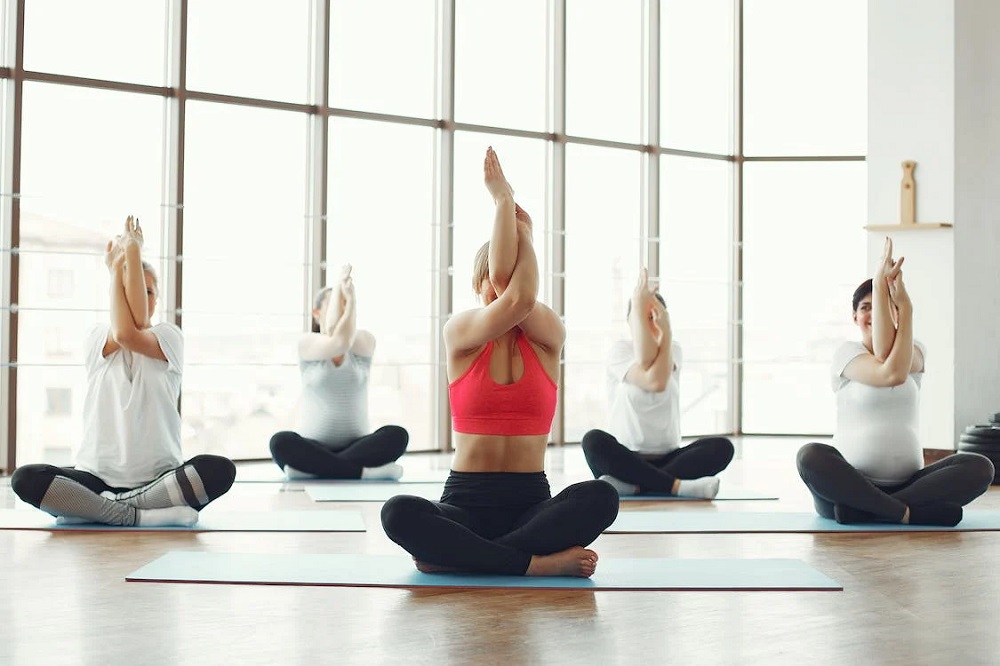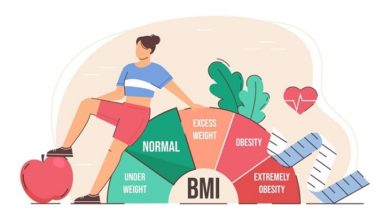Yoga for Flexibility and Balance

Yoga is not just a form of exercise; it’s a holistic practice that enhances both physical and mental well-being. In this article, we will delve into the incredible benefits of yoga for flexibility and balance. Whether you’re a seasoned yogi or a beginner, you’ll discover how yoga can be a powerful tool in your journey towards improved flexibility, balance, and overall wellness.
Yoga is often described as an art because it combines physical postures with mindful breathing and mental focus. This art has the power to transform your body and mind, bringing flexibility and balance to both.
Benefits of Yoga for Flexibility
Yoga offers a multitude of advantages when it comes to improving flexibility. Here are some of the key benefits:
Enhanced Range of Motion
One of the most notable benefits of yoga is the enhanced range of motion it provides. Yoga incorporates a wide variety of poses and stretches, each targeting different muscle groups. Over time, these movements work to increase your range of motion. By regularly practicing yoga, you’ll find that you can move more freely, making everyday activities easier and less strenuous.
Flexibility is not only about touching your toes but also about moving comfortably in your daily life. Yoga helps you attain this, making tasks like bending down to pick something up or reaching for items on a high shelf much more accessible. This improved range of motion also contributes to better sports and exercise performance.
Improved Posture
Yoga plays a significant role in improving posture. One of the main contributors to poor posture is muscle stiffness, particularly in the shoulders, chest, and back. Yoga helps correct this issue by lengthening and strengthening the muscles responsible for maintaining an upright posture.
As you become more flexible through yoga, your posture naturally improves. Your spine’s alignment becomes better, reducing the strain on your back, neck, and shoulders. Improved posture has aesthetic benefits, making you appear more confident and taller, but it also has critical health advantages, such as preventing chronic back pain and enhancing lung capacity.
Reduced Risk of Injuries
Flexible muscles and joints are less prone to injury. Yoga helps to prevent injuries by gently stretching and strengthening the muscles, tendons, and ligaments. It also increases your body’s awareness, allowing you to move with greater control and precision.
When you have a solid foundation in yoga, your body becomes more resilient, and you’re less likely to strain or overextend your muscles, which often leads to injuries. Reduced injury risk is particularly valuable for athletes and those who engage in physical activities regularly.
Alleviated Aches and Pains
Many people suffer from chronic aches and pains due to muscle tension and stiffness. Yoga can provide relief by releasing tension and improving circulation. Stretching in yoga promotes relaxation, reducing discomfort and improving overall comfort.
After a long day of sitting at a desk or engaging in repetitive movements, the body can develop tension and aches. Yoga offers an effective solution. It helps ease the discomfort in your neck, shoulders, lower back, and hips. With regular practice, you’ll find that aches and pains become less frequent, allowing you to enjoy greater comfort and mobility in your daily life.
Greater Joint Health
Yoga is especially beneficial for joint health. It encourages the synovial fluid within your joints to circulate, lubricating them and promoting their longevity. With regular yoga practice, you can enjoy better joint health as you age.
Joints are crucial for mobility and functionality. The health of your joints directly affects your ability to perform daily tasks and maintain an active lifestyle. By practicing yoga regularly, you promote the longevity of your joints, reducing the risk of joint-related issues such as arthritis.
Stress Reduction
Yoga combines physical postures with mindfulness and deep breathing. This union has a profound effect on reducing stress and anxiety. By relaxing the mind, yoga indirectly relaxes the muscles, allowing for more profound stretching and flexibility.
Stress is often held in the body as muscle tension. The deep breathing techniques in yoga encourage the body to release stress, allowing the muscles to relax and stretch more effectively. This not only contributes to better flexibility but also results in a sense of relaxation and well-being.
Mind-Body Connection
Yoga nurtures the connection between the mind and body. As you become more aware of your body during practice, you develop a deeper understanding of your physical limitations and possibilities. This awareness is a crucial aspect of improving flexibility and balance.
The mind-body connection is a fundamental principle in yoga. It’s about being fully present in your body, understanding your physical boundaries, and making choices that support your well-being. As you delve into this connection, you’ll notice improvements in your flexibility and balance, along with a deeper sense of inner harmony.
Benefits of Yoga for Balance
In addition to flexibility, yoga also provides numerous advantages for balance. Here are some of the key benefits:
Enhanced Stability
Yoga poses often require you to balance on one leg or hold positions that challenge your stability. Over time, this leads to enhanced stability and control over your body. Improved stability is essential for preventing falls and injuries, especially as you age.
Enhanced stability is particularly valuable for older adults, as it reduces the risk of falls and fractures. It’s also beneficial for athletes who need to maintain steady balance in their respective sports.
Better Coordination
Balancing poses in yoga demand a high level of coordination. Practicing these poses regularly improves your coordination skills. You’ll find that your ability to move gracefully and maintain control over your body increases significantly.
Improved coordination is not only beneficial for activities like dance or sports but also for everyday movements. Simple tasks like walking, climbing stairs, or picking up objects become more coordinated, making you less prone to accidents and injuries.
Core Strength
Yoga emphasizes the importance of a strong core. Many yoga poses engage your core muscles to maintain balance. As a result, your core strength improves, providing stability for your entire body.
Core strength is the foundation of balance. A strong core helps you maintain upright posture, prevents slouching, and supports your back. It also enhances your athletic performance and reduces the risk of injuries in various activities.
Mental Clarity
Balance in yoga extends beyond the physical realm; it also pertains to mental balance. The meditative aspect of yoga calms the mind and reduces mental clutter. This mental clarity can help you make better decisions and stay focused.
Mental clarity and focus are critical for daily life. When your mind is balanced and free of clutter, you’re better equipped to handle challenges, make sound decisions, and maintain a positive outlook.
Stress Reduction
Stress is often a leading factor in a lack of balance, both physically and mentally. Yoga’s emphasis on stress reduction creates an environment where balance can thrive. As you release stress, you become more centered and grounded.
Stress often manifests physically, leading to muscle tension, poor posture, and a lack of balance. Yoga’s stress-reduction techniques alleviate these physical symptoms and create a sense of mental and physical balance.
Improved Posture
A well-aligned body is essential for good balance. Yoga works on improving your posture, which directly contributes to better balance. You’ll find that you can stand and move with ease and grace.
Good posture is integral to maintaining balance. When your body is aligned correctly, it’s easier to maintain balance in various positions and movements. You’ll find that your balance is improved, whether you’re standing on one leg, performing yoga poses, or engaging in everyday activities.
Yoga Practices for Flexibility and Balance
To maximize the benefits of yoga for flexibility and balance, consider the following practices:
Gentle Yoga
Gentle yoga is an excellent choice for beginners or individuals looking for a more relaxed practice. It focuses on gentle stretches and is perfect for improving flexibility without pushing your body too hard.
Hatha Yoga
Hatha yoga is a well-rounded practice that combines postures, breathing exercises, and meditation. It’s ideal for enhancing flexibility, balance, and overall well-being.
Vinyasa Yoga
Vinyasa yoga is a dynamic form of yoga that links breath with movement. It challenges your balance and flexibility through a series of flowing postures.
Restorative Yoga
Restorative yoga is a deeply relaxing practice that involves holding poses for an extended period. It’s excellent for increasing flexibility, reducing stress, and improving balance.
Yin Yoga
Yin yoga focuses on long-held, passive stretches that target connective tissues and fascia. It’s perfect for enhancing flexibility and balance, especially in areas like the hips and lower back.
Practice Mindfulness
Regardless of the style of yoga you choose, mindfulness plays a crucial role in improving flexibility and balance. Paying full attention to your body and breath during practice is key to reaping the benefits.
Frequently Asked Questions (FAQs)
What are the benefits of yoga for flexibility?
Yoga offers enhanced range of motion, improved posture, reduced risk of injuries, alleviated aches and pains, greater joint health, stress reduction, and a strengthened mind-body connection.
Can yoga help with balance?
Yes, yoga is highly effective for improving balance. It enhances stability, coordination, core strength, mental clarity, and posture.
What type of yoga is best for beginners?
Gentle yoga and Hatha yoga are excellent choices for beginners, providing a foundation for improving flexibility and balance.
How often should I practice yoga for optimal flexibility and balance?
The frequency of yoga practice varies from person to person. Aim to practice at least three times a week to experience significant improvements in flexibility and balance.
Is yoga suitable for people of all ages?
Yoga is accessible to individuals of all ages and fitness levels. It can be adapted to accommodate different physical abilities and goals.
Can yoga relieve stress and anxiety?
Yes, yoga is a powerful tool for stress reduction. The combination of physical postures and mindfulness helps calm the mind and reduce stress and anxiety.
Conclusion
Yoga is a transformative practice that offers a plethora of benefits for both flexibility and balance. By incorporating yoga into your daily routine, you can enjoy enhanced range of motion, improved posture, reduced risk of injuries, alleviated aches and pains, greater joint health, stress reduction, and a strengthened mind-body connection.
Yoga enhances stability, coordination, core strength, mental clarity, and posture, contributing to an improved sense of balance. Whether you’re a beginner or experienced yogi, the path to greater flexibility and balance begins with your next yoga session.







